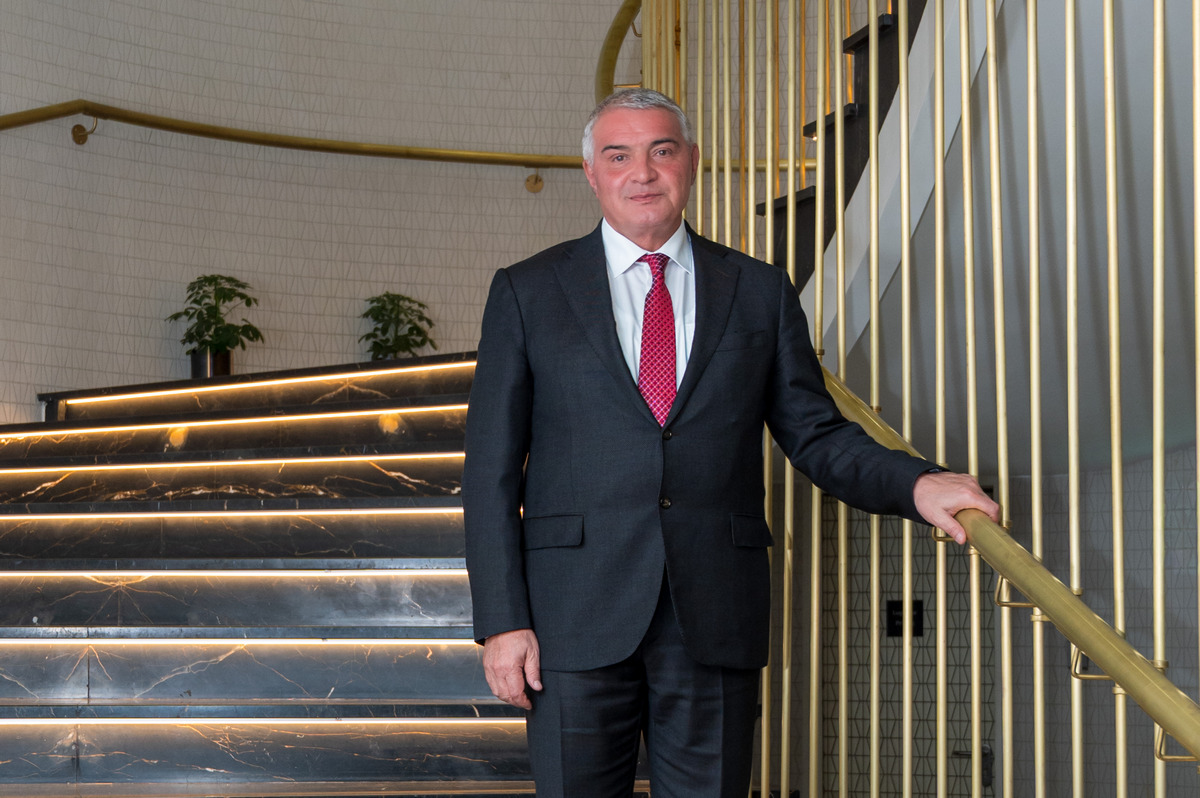From centuries-old cultural ties to modern cooperation in economy, tourism and diplomacy, Armenia sees Serbia as a key partner on its balanced path between East and West
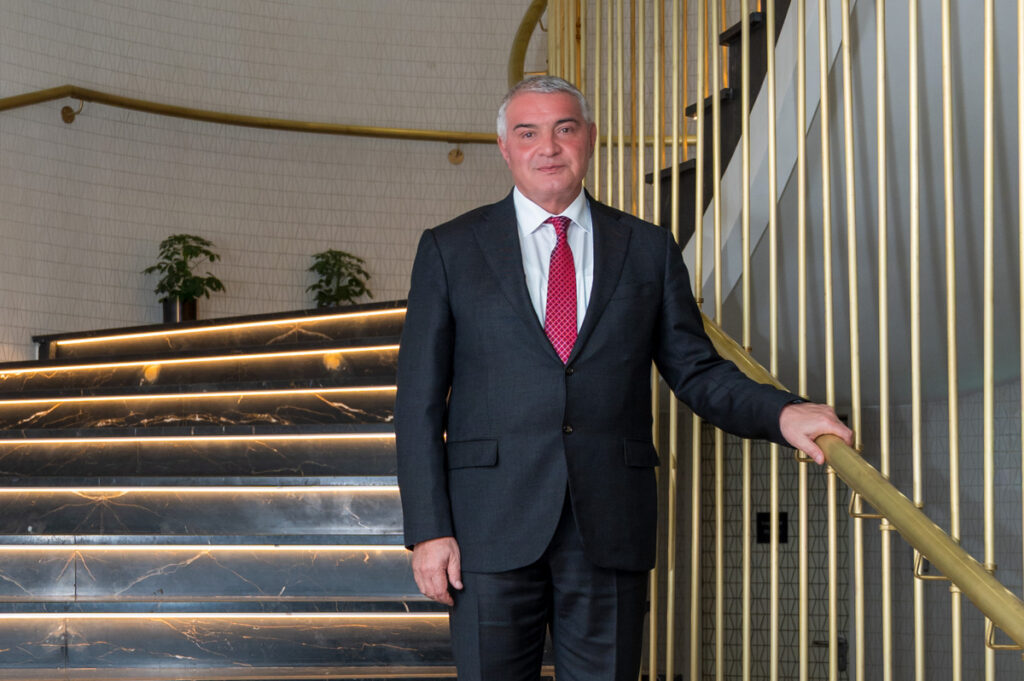
AMBASSADOR’S INTERVIEW
H.E. Ashot Hovakimian
The Ambassador of Armenia to Serbia
For this special In Focus: Armenia edition of Diplomacy & Commerce magazine, we spoke with H.E. Ashot Hovakimian, Ambassador of the Republic of Armenia to the Republic of Serbia. In an exclusive interview, Ambassador Hovakimian reflects on the centuries-long friendship between Armenia and Serbia, the cultural heritage that unites the two nations, and the opportunities for deeper cooperation in areas such as economy, tourism, and diplomacy as Armenia pursues a balanced foreign policy and a stronger presence on the global stage.
Armenia and Serbia share a long-standing tradition of friendly relations, grounded in common historical experiences and mutual understanding
Armenia and Serbia enjoy traditionally friendly relations. How would you assess the current state of bilateral cooperation, and in which areas do you see the greatest potential for further development?
Armenia and Serbia share a long-standing tradition of friendly relations, grounded in common historical experiences and mutual understanding. I believe that the most important foundation for further strengthening these ties is maintaining a genuine sensitivity to each other’s national priorities. In this context, we hope that Serbia, together with other partners, will unequivocally support the territorial integrity of the Republic of Armenia: a signal of solidarity that we deeply value, yet have regrettably not witnessed in recent times. We are also looking forward to high-level reciprocal visits from Serbia, which will provide an excellent opportunity to explore deeper collaboration in the various fields. These visits will help translate our historical friendship into concrete projects and initiatives.
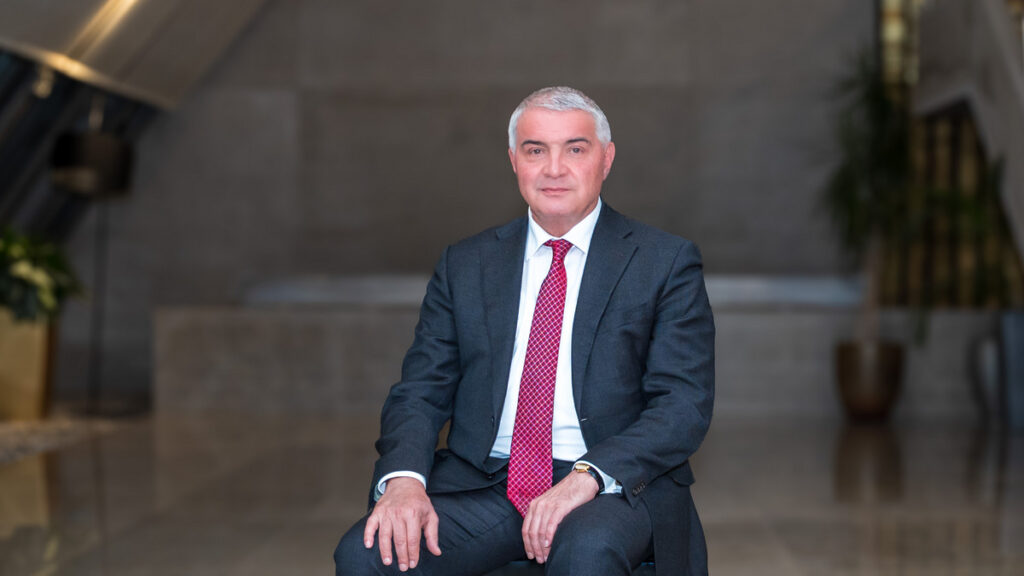
In this regard, we also attach importance to the Armenian-Serbian Intergovernmental Commission, where the appointment of a Serbian co-chair is still pending. Once the commission is operational, it can serve as a practical platform for advancing our economic and sectoral cooperation. At the same time, we have a number of draft agreements ready for signing soon, and their adoption would give a solid institutional framework to our partnership.
At the same time, it is vital to focus on cooperation that directly benefits our peoples. Tourism is one such area: Armenian citizens already travel to Serbia frequently thanks to the visa-free regime, and we would very much like to see more Serbian visitors discovering Armenia. As the world’s first Christian state, Armenia offers ancient monasteries, rich cultural heritage, and a distinctive cuisine, all of which, I believe, would resonate with Serbians.
Overall, by combining mutual respect for each other’s priorities with tangible cooperation in various fields, I see great potential for Armenia–Serbia relations to grow even stronger in the years ahead.
The Armenian community is small in number but continues to act as a living bridge
The Armenian community in Serbia has a long and rich history. How do you view its role today, both in preserving cultural identity and in serving as a bridge between our two nations?
Armenians have been present in Serbia for centuries, contributing as craftsmen, builders, and merchants, and even leaving a mark on Serbian spiritual and cultural life. Today the Armenian community is small in number but continues to act as a living bridge, with families in places like Vrnjačka Banja maintaining traditions that reflect our intertwined histories. At the same time, many Armenian heritage sites in Serbia: churches, cemeteries, and monuments, remain under-recognized or unpreserved, with only a few newer symbols, such as the khachkars in Zemun and Novi Sad, serving as reminders of solidarity and shared memory.
Looking ahead, there is clear potential for both countries to do more: documenting and restoring heritage sites, developing cultural projects, and integrating these legacies into tourism initiatives. Such efforts would not only honour our past but also strengthen the foundation for friendship and cooperation in the future.
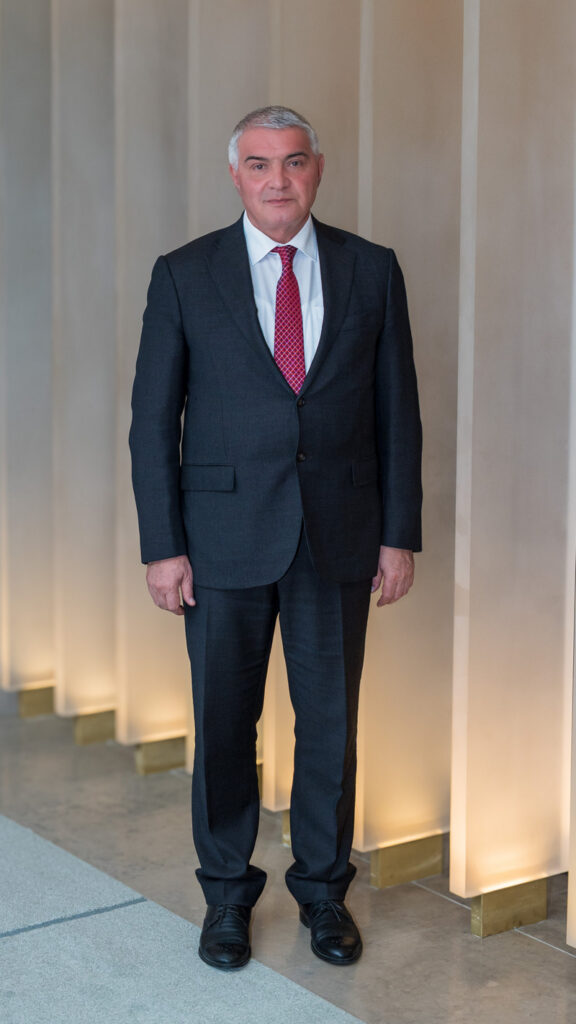
Beyond culture, how do you perceive the evolving economic and institutional partnership between Armenia and Serbia, especially in sectors that reflect shared expertise or innovation rather than direct investment figures?
There is significant scope for Armenia and Serbia to expand cooperation in forward-looking sectors such as the digital economy, renewable energy, and infrastructure development. Armenia has developed notable strengths in information technology and innovation, boasting a vibrant start-up ecosystem and a skilled workforce. These assets can complement Serbia’s expertise in engineering, industrial production, and applied sciences. Together, our countries could explore joint ventures in fields such as software development, fintech, smart manufacturing, and green technologies, creating investment partnerships that not only generate economic value but also enhance competitiveness in regional and global markets.
Tourism also offers considerable untapped potential. Armenian citizens already travel frequently to Serbia under the visa-free regime, and we hope to see a growing number of Serbian tourists discovering Armenia’s unique heritage. With its ancient monasteries, mountain landscapes, and distinctive cuisine, Armenia is well positioned to attract visitors seeking authentic cultural experiences. Joint initiatives, such as promotional campaigns, tour packages, or cooperation between travel agencies, could stimulate the flow of tourists in both directions. Such exchanges would not only boost local economies but also strengthen the people-to-people ties that form the most lasting foundation of bilateral relations.
There is significant scope for Armenia and Serbia to expand cooperation in forward-looking sectors such as the digital economy, renewable energy, and infrastructure development
The “Yerevan Dialogue” has been presented as a new platform for strengthening Armenia’s role in regional and international cooperation. How do you see its significance in the current geopolitical environment?
The Yerevan Dialogue is an important platform for Armenia to enhance its regional and international role, particularly in today’s complex geopolitical setting. It brings together policymakers, academics, civil society, and business leaders to discuss shared challenges such as peace, climate change, and economic interconnectivity. Armenia’s strategic location between Europe and Asia, its rapid economic growth, and rich cultural heritage provide a unique setting for international cooperation and debate. The conference also highlights Armenia’s commitment to regional stability, sustainable development, and multipolar diplomacy.
The inaugural edition of the Yerevan Dialogue was held in 2024, establishing itself as a valuable and inclusive forum for addressing contemporary issues and promoting global cooperation. The second edition, held in May 2025 under the theme “Navigating the Unknown,” underscored Armenia’s commitment to fostering dialogue and offering solutions. Initiatives such as the Crossroads of Peace, promoting regional integration through infrastructure and trade, were highlighted, reflecting Armenia’s determination to overcome historic blockades and isolation.
By hosting this forum and convening diverse voices from Europe, the Middle East, and beyond, Armenia positions itself as a neutral and constructive hub for dialoguer strengthening both its diplomatic leverage and its contribution to regional cooperation.
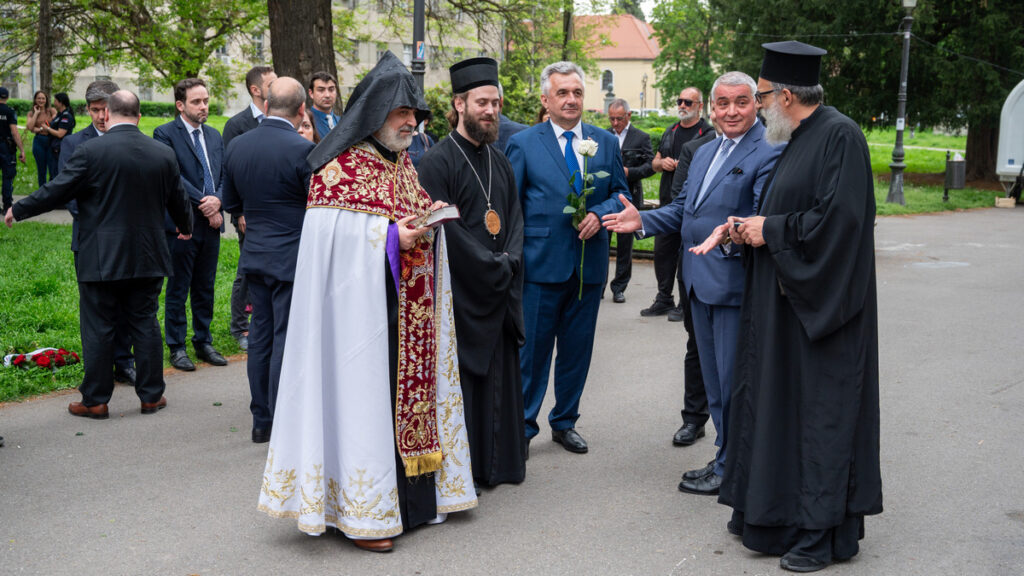
Peace and stability in the South Caucasus remain of key importance. How optimistic are you about the ongoing peace negotiations with Azerbaijan, and what role do you see for international partners in supporting this process?
On 8 August, the meeting between the Prime Minister of the Republic of Armenia, the President of the Republic of Azerbaijan and the President of the United States of America in Washington D.C., opened a new chapter in our region’s history by initialing the Agreement on Establishment of Peace and Inter-State relations between the Republic of Azerbaijan and the Republic of Armenia by the Ministers of Foreign Affairs of the two countries. On the outcomes of the meeting, the leaders of three countries also signed a Joint Declaration, which includes the establishment of the “Trump Route for International Peace and Prosperity” (TRIPP) and aims to enhance regional connectivity and economic cooperation between our nations. Three other memorandums were also signed bilaterally between Armenia and USA, one of which reaffirms USA’s support to the “Crossroads of Peace” initiative of the Government of the Republic of Armenia.
The peace agreement and the “Crossroads of Peace” initiative are central to Armenia’s evolving national security strategy and long-term economic roadmap. The “Crossroads of Peace” project aims to transform Armenia into a land-linked hub by opening and improving transport communications with Azerbaijan, Turkey, Georgia, Iran, EU and other stakeholders. This is not just an economic initiative – it is a critical security strategy. Greater regional interdependence reduces the risk of conflict and fosters long-term stability.
Hereby, the international partners remain essential to the peace process. Their diplomatic support, mediation, and economic assistance help ensure the successful implementation of agreements and contribute to long-term regional stability. With continued international engagement and commitment from all sides, I believe we can look to the future of the region with cautious optimism.
In this spirit, Armenia is preparing to host two major international events in 2026: The European Political Community summit and the COP17 Biodiversity Conference which reflect our growing international prestige and reaffirm our commitment to dialogue and sustainable development.
Armenia’s balanced and balancing policy reflects its vision of openness positioning the country as a connector between regions
Armenia is also pursuing closer cooperation with the European Union while maintaining its EAEU commitments. How does this multi-vector approach shape Armenia’s foreign policy priorities?
By engaging both the European Union and the Eurasian Economic Union, we seek to expand opportunities in different directions while ensuring balance and resilience in a complex geopolitical environment. As the Prime Minister of the Republic of Armenia has announced at the beginning of this year, we have decided to adopt a balanced and balancing foreign policy, which means that we will try to create balance between our different relations with the European Union, USA, China, India, Russia, with our regional powers etc.
Our partnership with the European Union has gained new depth in recent years. The Comprehensive and Enhanced Partnership Agreement (CEPA) remains the legal foundation of our cooperation, and through it Armenia is actively working to align with EU legislation and standards in a wide range of sectors. It is worth mentioning that recently Armenia’s National Assembly adopted the “Law on the Launch of Armenia’s EU Accession Process” which reflects the European aspirations of our people and underlines our commitment to reform and modernization. The new Armenia–EU Partnership Agenda can further expand this framework and provide a roadmap for deepened cooperation in governance, connectivity, green transition, and the digital economy.
In this context, Serbia is of special interest to Armenia. As a candidate country for EU membership, Serbia has accumulated valuable experience in accession negotiations, particularly in areas such as justice, economic reforms, and visa liberalization. Learning from Serbia’s progress and challenges can be highly beneficial for Armenia as we advance on our own European path. We see great potential for structured dialogue and knowledge-sharing in this regard.
At the same time, our membership in the Eurasian Economic Union ensures access to a large regional market and strengthens trade and economic ties with our neighbours. Rather than being contradictory, our cooperation with both the EU and the EAEU is complementary, widening the scope of Armenia’s partnerships.
Armenia’s balanced and balancing policy reflects its vision of openness positioning the country as a connector between regions, expanding opportunities for its people, and fostering peace and stability in the South Caucasus.
Looking ahead, what message would you like to send to the Serbian public and business community regarding Armenia’s vision for partnership and long-term cooperation?
Our countries share many similarities: we are both landlocked, both proud of our rich histories, and both committed to building a secure and prosperous future for our people. Armenia is open and ready to expand partnerships across a wide spectrum: economy, trade, culture, tourism, education, and innovation.
To the Serbian public and business community, I would say that Armenia offers opportunities that are both concrete and mutually beneficial. We welcome Serbian investors, entrepreneurs, and innovators to explore the Armenian market, to discover our skilled workforce, and to participate in projects ranging from technology to infrastructure, as well as in cultural and tourism initiatives.
Moreover, Armenia values people-to-people connections as much as formal partnerships. Strengthening cultural exchange, educational cooperation, and tourism links can create trust, understanding, and long-term collaboration that goes beyond business deals. I am sure that together, we can translate our historical friendship into tangible benefits for our societies, ensuring that cooperation today lays the foundation for a strong and shared future.



